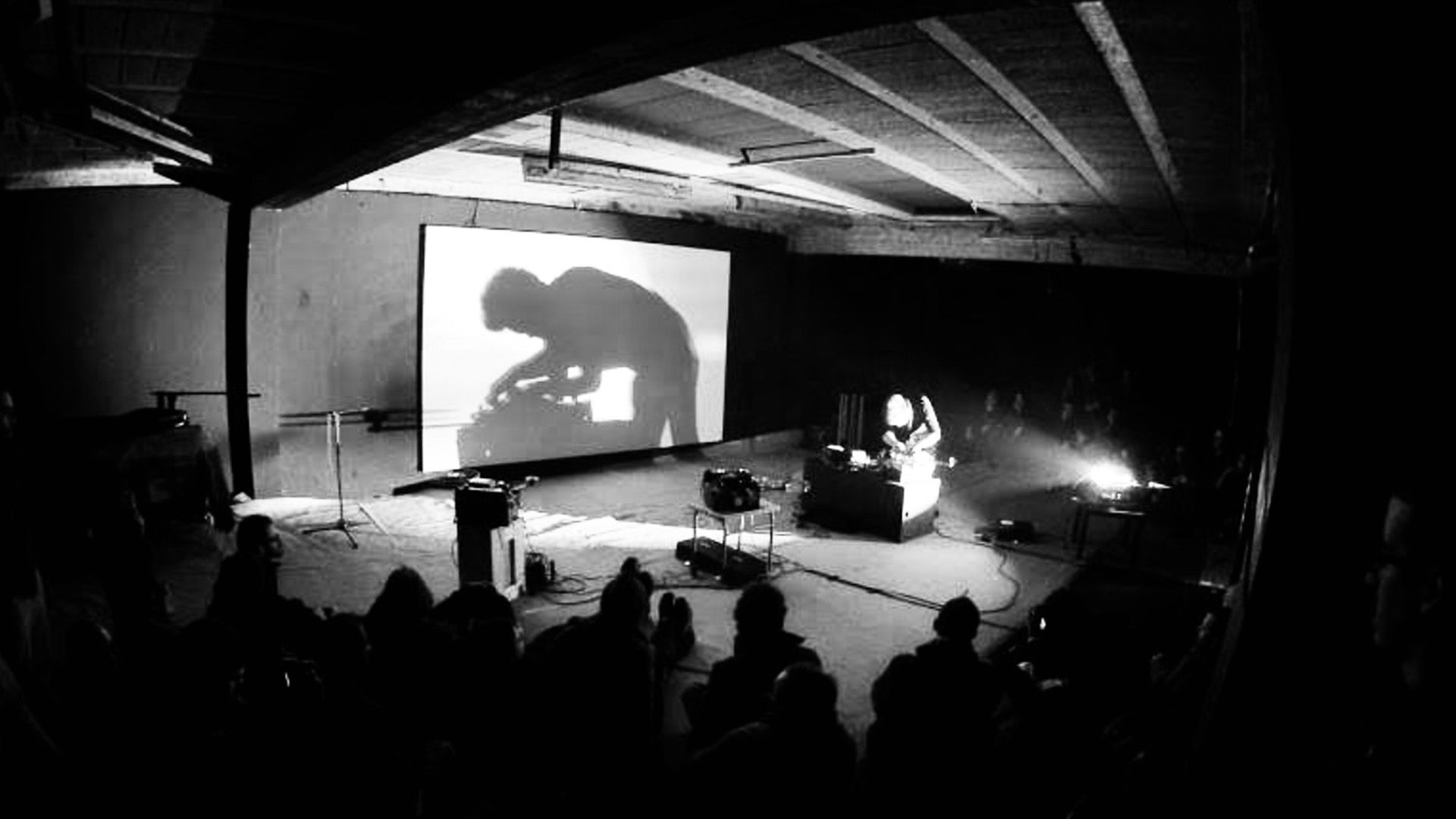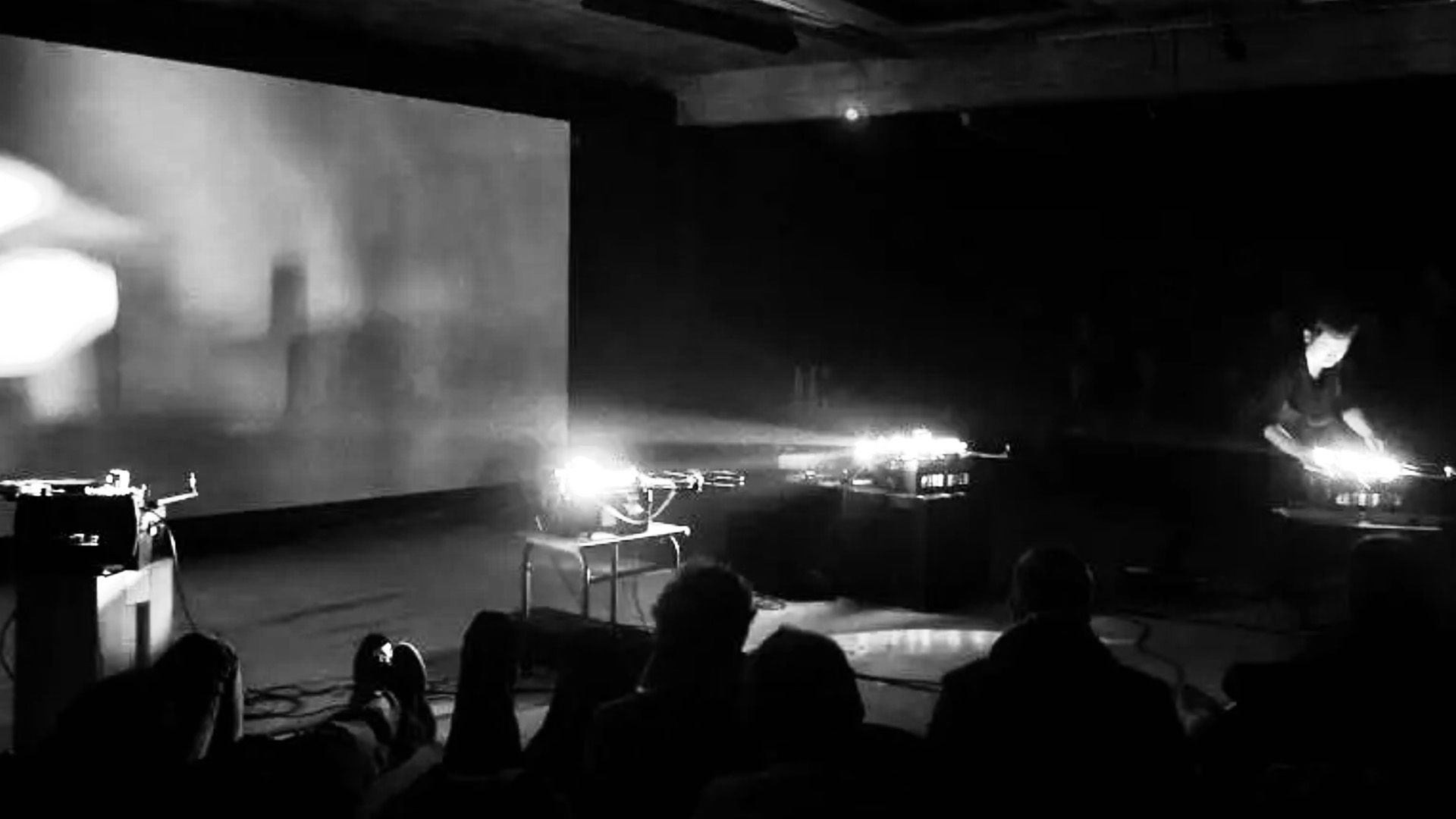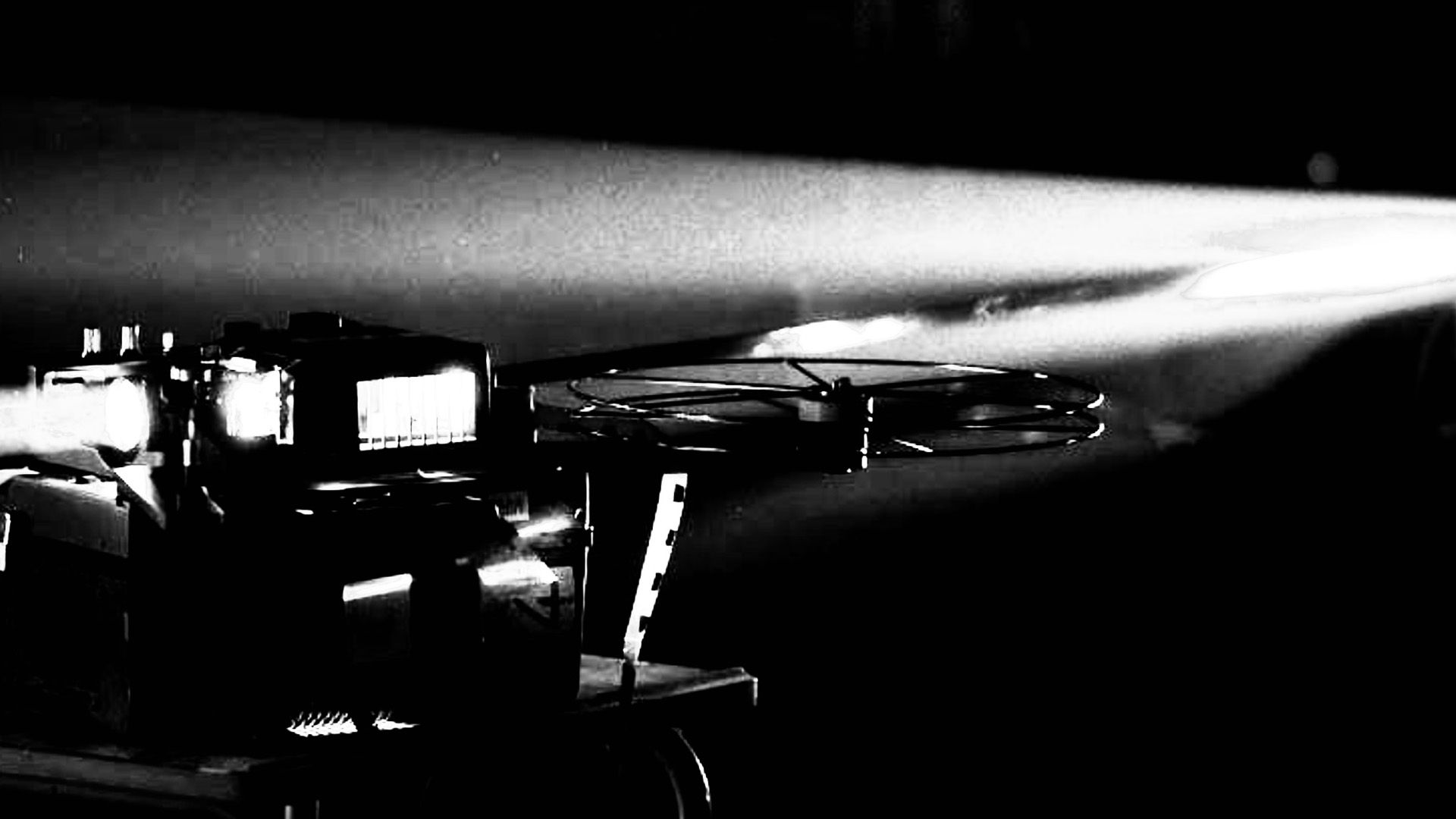HANGJUN LEE
DESBORDAMIENTOS
Patio da Fundación Luis Seoane | Saturday June 3rd | 11:00 p.m. | Free entry to all venues until full capacity.
Hangjun Lee is one of the elemental figures in Korean experimental cinema. On top of working as an artist in the sphere of expanded cinema and as a filmmaker, he is also a programmer, researcher, and has been in charge of the EXiS festival in Seoul. On this occasion, we are presenting two of his film performances, which address some of the interests to be found in his work. On the one hand, there is Film Walk, in which he subverts and occupies the space of the cinema hall and the “proper” ways of using projectors, and Phantom Schoolgirl Army, infused with that same agitating spirit, but using it in a symbolic revision of a convulsive incident in recent Korean history.



FILM WALK
Hangjun Lee, South Korea, 2011, 16mm multi-projection with optical sound and electronic devices, 20 min.
Film Walk is perhaps the ne plus ultra of this branch of projection performance, treating the projector literally as an instrument. In this work, which has varied in form across several years,Lee threads 16mm film through only the sound head of a projector tuned on its side, bypassing the projector’s gate. This film is double-perf, meaning a second row of sprocket holes runs along the side of the strip where that soundtrack would normally be. As these pass over the sound head, they produce an electronic purr, or, when amplified enough, an unpleasant metallic grinding comparable to the sound of a buzz saw. Lee pulls the film through the projector by hand, yanking it roughly through the sound head. The variations in speed that result from Lee’s manual movement of the filmstrip cause abrupt changes in the frequency and timbre of the sprocket sound. (Jonathan Walley, Cinema Expanded)
PHANTOM SCHOOLGIRL ARMY
Hangjun Lee, France, 2013-2014, 16mm film performance with strobe light and optical sound, 25 min.
Phantom vertiginous audiovisual performance work addresses the Yeosu-Suncheon Rebellion (1948), one of South Korea’s dark historical traumas whose immediate aftermath (the number of casualties overall is estimated to reach 10,000) and long-term repercussions in effectively establishing the ‘red scare’ or anti-communism proved vital, or rather, lethal to many lives as well as the egalitarian imaginary in post-war South Korea. The fact that the portrait photographs in the film are not those of actual victims but of people taken later in the same area –which Lee got hold of from a local photo studio– further complicates the question of “recognition”. One is thus tempted to suggest that Phantom paradoxically serves to forget these faces, along with the historical trauma of the massacre, in seeking to remember them. If our reading of Phantom as what virtualizes and reanimates the site of the massacre in the present holds true, one could also say that the very apparition of peoples’ faces marks the moment of their identification as targets and as such their vulnerability and exposure to bullets. In this particular sense, faces in photographic plates should not be made to last long enough to be recognizable. Their physiognomy better remains illegible or, in accordance with Lee’s insistence on the “grey room”, turns grey. In a word, it must flicker. (Yung-Bin Kwak, Fireworks and Massacre in Grey (Spasmodic) Room)
